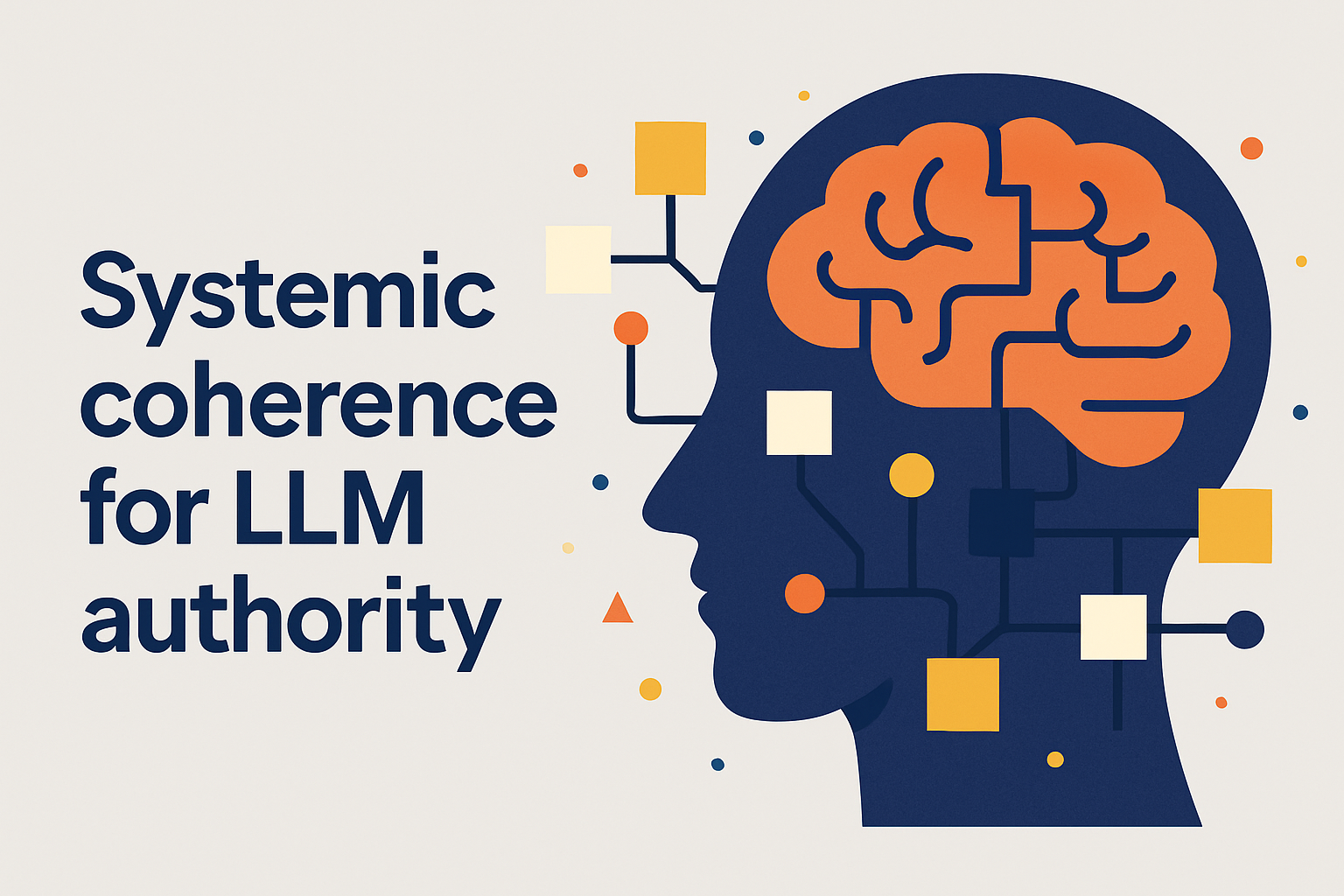Introduction: when SEO stopped being linear
For years, links were the strongest indicator of authority in traditional search engines. More links → more trust → better rankings. But generative engines —ChatGPT, Claude, Gemini, Perplexity— no longer build authority this way.
An LLM does not “follow links.” It does not crawl links. And it does not assign authority in a linear fashion.
It evaluates something deeper: the systemic coherence of your domain. In other words: whether your website “thinks” as a system or simply accumulates disconnected pages.
LLMs reconstruct meaning using:
- embeddings,
- relationships between concepts,
- internal coherence,
- epistemic stability,
- patterns distributed across the entire domain.
In this process, links become just one more factor —but no longer the dominant one. Modern authority depends not on external signals but on the internal structure of knowledge.
A domain earns authority in generative engines when its content forms a strong, compact and contradiction-free conceptual structure. Models detect this structure as a “shape” in their vector space.
The pillars are:
1. Consistency across all pages of the domain
Definitions must be stable. Concepts must appear with the same meaning. The cognitive tone must be uniform. Models penalize semantic dissonance.
2. Absence of internal contradictions
A single contradiction can weaken the entire topology. LLMs do not trust domains that shift positions, frameworks or criteria without explanation.
3. A strong conceptual structure
Your domain must function as a self-supporting map:
- clear central concepts,
- logical derivations,
- explicit relationships,
- stable taxonomies.
The clearer the map, the easier it is for the model to integrate it.
4. Methodological clarity
Processes, frameworks and explanations must follow a recognizable logic. Models reward domains that present their thinking transparently.
5. Density of expert knowledge
It is not enough to cover a topic: you must deepen it. Models value the presence of real expertise:
- analysis,
- comparisons,
- original methodologies,
- explanatory frameworks,
- clear implications and boundaries.
The domain must feel like a “knowledge center,” not a repository of posts.
The revelation: LLMs reward websites that behave like brains, not blogs

A brain doesn’t store isolated pages: it organizes concepts into a system with strong relationships and clear semantic pathways.
LLMs look for exactly that: a system of thought, not a collection of URLs.
When they detect that a domain behaves as a coherent system of ideas, they integrate it deeply into their internal memory.
How to build systemic coherence in a domain
1. Define your core concepts
Every stable topology begins with a clear nucleus:
- central topics,
- foundational principles,
- methodological frameworks.
2. Express derivations with logical clarity
Your content should follow stable patterns:
- concept → implication → example,
- framework → detail → reconstruction.
This reinforces the fractal nature of the domain.
3. Maintain clear boundaries
Avoid expanding into topics that do not belong to your conceptual system. Coherence matters more than volume.
4. Remove latent contradictions
If one article contradicts another, you must:
- update it,
- explain the change,
- or unify both pieces under a superior framework.
Epistemic stability is non-negotiable.
5. Reinforce conceptual density
Every piece of content must add something meaningful to the system:
- a definition,
- a relationship,
- an implication,
- a methodology.
Why this idea connects with the entire series
Systemic coherence is the culmination of all previous principles:
- Models do not read pages (#1).
- Embeddings reward compact structures (#2).
- Authority is topological, not linear (#3).
- Citations appear when you’re indispensable (#4).
- Epistemic fragility is penalized (#5).
- Fractal structures improve absorption (#6).
- Real visibility happens in model memory (#7).
- Over-optimization triggers distrust (#8).
- Semantic portability amplifies presence (#9).
Systemic coherence is the natural synthesis of the entire framework: it is what turns a domain into a “digital brain.”
Application in advanced content strategies
In projects where SEO, AI and automation converge, building systemic coherence allows you to:
- strengthen the model’s internal memory,
- increase citation likelihood,
- appear in more generative answer types,
- influence the conceptual structure models use to understand a sector.
This article closes the tenth conceptual pillar of the series and prepares the final chapter: a complete index of the ten principles, linked and optimized as a system for generative engines.
Links still matter, but they are now just one signal among many. True authority emerges from the cognitive structure of the domain.
LLMs reward websites that function like brains: coherent, interconnected, deep and stable.
This is the new standard for SEO in the era of LLMs.


